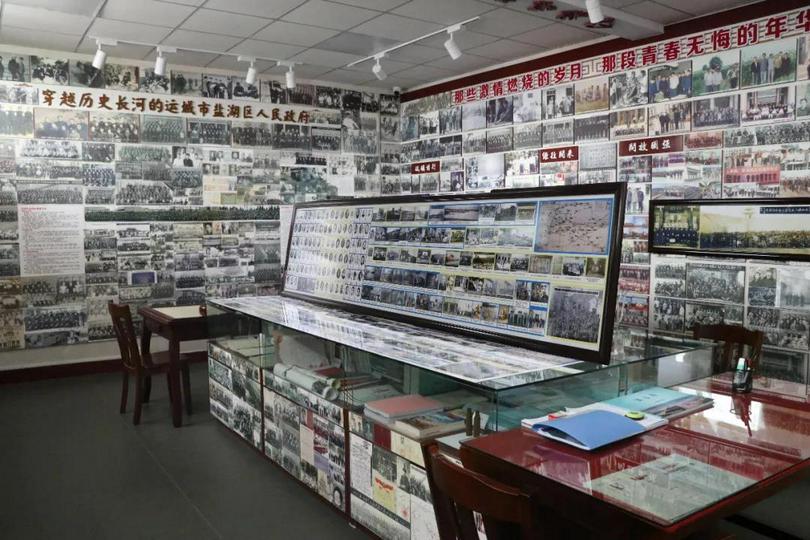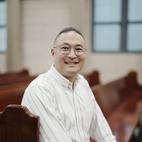On May 7, an article on Swedish missionaries in Yuncheng City, Shanxi was published by the local government, showing how the missionaries preached the gospel and engaged in local social service programs.
The post entitled “A Journey from Overseas: A Bond of Ten Decades - Swedish Missionaries in Yuncheng City” introduces an exhibit of photos and articles about the Swedish missionaries in a series called Yanhu Stories. It was released on the official Wechat account of the People’s Government of Yanhu District.
The series of stories was based on materials now preserved in the Yanhu District Government Archive. The purpose of the series is to share an original perspective on this period of history and show the role of the missionaries in the area’s development. They also served as an inspiration to the local youth, a very promising part of the bright future of Yanhu.
As the one hundred years of history unfolded in the story, it showed how the local people lived through the turbulent political situation of the Late Qing Dynasty, and how they coped with the conflict and mixing of traditional feudal culture, western culture and the revolutionary climate of that time. It also depicted many aspects of the Swedish Missionary Society of China (SMC)—how over time they adapted to local customs and became assimilated into the local community. The missionaries provided advanced medical services, introduced new advances in science and founded social welfare institutions, all which led people to Christianity.
The first Swedish missionary, Theodore Hamberg, was sent to China in 1847. He is well known for recording the events of the Taiping Heavenly Kingdom and founding the first Hakka Church in Guangdong province.
Thirty years after that, the SMC was established by Erik Folke, a young Swedish Christian. The society established its mission area in the golden triangle of the Yellow River, the birthplace of Chinese civilization, and Yuncheng was chosen as its centre.
Despite the good reputation earned by a British missionary, David Hill, who helped in Yuncheng’s drought and pestilence in 1878, the local people did not give a warm welcome to the missionaries and their faith. In the first 12 years, only eight missionary stations and five Christian schools were built in the whole parish.
It was after the suppression of the Taiping Heavenly Kingdom that the mission society gradually adjusted its strategy and things became more open. The missionaries made more local acquaintances, both among the upper and lower class and held more training courses in areas like literacy and sewing. They did more rehab work, began orphanages and built primary schools that children could attend at no cost. In these schools they were taught Western civilization. They also adopted more ways of doing evangelism that were not limited to just the church. Up until the 1911 Revolution, they established eight men’s schools and five women’s schools in Yuncheng, which included 328 students.
In the 1920s, Yuncheng again suffered from serious drought and pestilence. One of the society members, Verner Wester, collected 50 thousand Swedish Krone for local people and distributed 20 thousand kilograms of food. As the newly elected leader of the disaster relief committee, Wester adopted scientific methods to identify the famine victims and suggested the “work relief” model to fix the city.
According to the story, during the fifty years from the end of the 19th century to 1946, the society gradually withdrew from China. About 115 Swedish missionaries had served in the Yuncheng mission area. They built more than 60 churches with 6,000 members, 270 of them were native. Apart from these, the most important legacy was the Yuncheng Evangelismos Hospital, established by a Christian, Liu Zixiang. The hospitals scale, equipment and medical techniques made it the best facility in the entire city at the time.
Another important legacy left in Yuncheng, which is less visible than the hospital, is the deep attachment to this city of the missionaries, whose offsprings often came back to China to retrace their parents’ or grandparents’ steps in Yuncheng.
One example was in 2015 when the granddaughter of Verner Wester and her husband planned to visit Yuncheng in the spring. As the news spread, one student of Verner Wester, who was already 93 years old, began to do the countdown to their trip. However, the couple arrived in November, when the student had already passed away. The student’s daughter, Ms. Xie Yuling took care of the couple and cooked for them every day during their two weeks stay, so as to repay the teacher-student friendship between her mother and Verner Wester.












